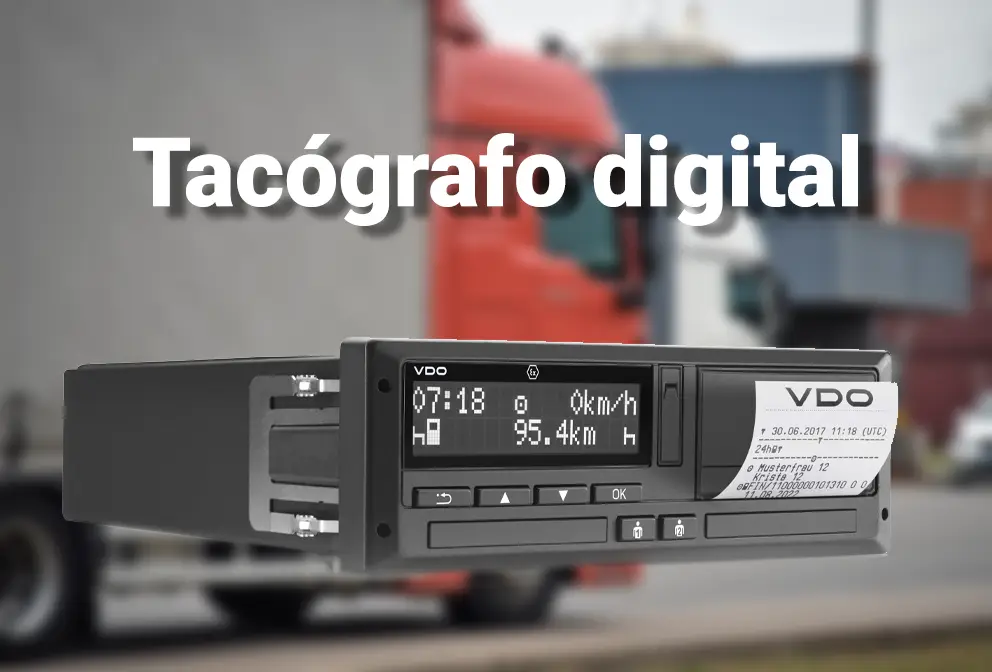The transport industry, in its constant evolution, is updating the different technologies that improve the sector, such as the mandatory implementation of the digital tachograph in all trucks. This device, which registers the activity of drivers and vehicles, has become an essential tool for guaranteeing road safety and compliance with regulations. For this reason, the European Union is making it compulsory to update these devices, which are called second generation digital tachographs.
Digital tachograph developments and trends
The digital tachograph has come a long way since its introduction in all vehicles over 3.5 tonnes. Initially, these devices were limited to recording drivers’ driving and resting hours. However, with advances in technology, modern digital tachographs are capable of collecting a wide range of data, including vehicle speed, geographical location, and idle times.
One of the most prominent trends is the implementation of second-generation smart tachographs as agreed by the European Parliament. From December 2024, the European Union will require the installation of these devices in all goods and passenger vehicles operating international services with an analogue or non-intelligent digital tachograph installed before 15 June 2019. These tachographs not only record more detailed information, but also allow driver identification and the recording of border crossings, facilitating traffic control and improving road safety.
Another important trend is the integration of digital tachographs with navigation and driver assistance systems. This integration is already enabling more efficient fleet management, optimising routes and reducing driving times. It also provides drivers with real-time information on their performance and compliance with regulations, allowing them to vary their driving and adapt to the needs at any given moment.
Real-time monitoring is also a key feature of modern digital tachographs. Companies can track the location and status of their vehicles at all times, facilitating more efficient management and reducing operating costs. In addition, real-time monitoring helps prevent driver fatigue, ensuring compliance with driving and rest times.
Benefits of the Digital Tachograph
The main benefit of the digital tachograph is to improve road safety by monitoring the activity of vehicles fitted with the device. By ensuring that drivers comply with driving and rest times, the risk of accidents caused by fatigue is reduced. In addition, the detailed recording of vehicle activity allows for better monitoring and control by the authorities as the records must be kept for a certain period of time.
Digital tachographs also contribute to improving the operational efficiency of transport companies. By providing accurate data on vehicle activity, companies can optimise routes, reduce idle times and improve fleet management.
Regulatory compliance is another key benefit of the digital tachograph. EU regulations require the installation of these devices to ensure strict compliance with road traffic regulations as well as driver, rest and driving time regulations. This not only helps to avoid penalties, but also improves transparency and trust in the transport industry, as well as ensuring better safety for professional drivers.
The Future of the Digital Tachograph
The future of the digital tachograph looks bright, with increased integration, connectivity and advanced data analysis, starting with second generation tachographs, such as:
Increased Connectivity
Connectivity will be a key feature in the future, integration with other fleet management systems and the ability to transmit real-time data will enable more accurate monitoring and more informed decision making. This will not only improve operational efficiency, but also facilitate compliance with traffic and driving time regulations for professional drivers.
Advanced Data Analysis
Advanced data analytics is another trend that will shape the future of the digital tachograph. The ability to collect and analyse large volumes of data will enable transport companies to identify patterns and trends, optimise their operations and improve road safety.
Technological Innovations
Technological innovations will continue to drive the development of the digital tachograph. From the incorporation of artificial intelligence to the use of Blockchain technologies to ensure data integrity. The future of the digital tachograph will be marked by advances that will improve safety, efficiency and regulatory compliance in the transport industry, so we are likely to see new versions of second generation digital tachographs in the coming years.
In short, we must continue to remember that the digital tachograph is an essential tool in the transport industry, and its evolution and adoption will continue to make a significant difference to road safety and operational efficiency. The implementation of second generation smart tachographs from 2025, integration with navigation and driver assistance systems, will continue to reinforce the transformation and evolution that the transport sector needs to continue to be a leading industry.



